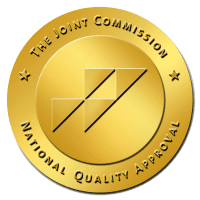The Serenity Prayer reads, “Grant me the serenity to accept the things I cannot change, the courage to change the things I can, and the wisdom to know the difference.” This is often expressed in 12-step programs-such as Alcoholics Anonymous (AA) and Narcotics Anonymous (NA)-and encapsulates the philosophy of these organic organizations.
AA and NA have millions of members in countries across the globe. Their popularity is due to their proven success in alcohol and drug rehabilitation, which is accomplished through the completion of their 12 steps.
Below are the 12 steps of NA. Keep reading to find out more about what the process toward recovery entails and why it might work for you.
AA vs. NA
Alcoholics Anonymous (AA) and Narcotics Anonymous are very similar but have a few distinctions. AA was founded in 1935 to help and empower alcoholics (today we would broaden that to anyone with “alcohol abuse disorder“).
The aim was to help members grow spiritually and become aware that they had hurt others. It was based on the idea that the community can aid in this journey.
NA was founded in 1955 to expand the concepts of AA to include people afflicted by other forms of addiction, including prescription medications and illicit drugs. They ascribe the same tenants and methodology as AA but focus on the broader issue of addiction, not just alcohol addiction.
For this reason, the 12 steps of NA are almost identical to those belonging to AA. However, there is one main difference between the two. It is that dealing with addiction to a substance (alcohol) is different than dealing with addiction as a whole.
The latter is what NA’s 12-step program offers. This may seem like a subtle distinction, but it makes NA more applicable to someone who may have issues with addiction in general, rather than only to a particular substance.
Why Do the 12 Steps Work?
Before getting to the steps themselves, it is worth briefly exploring why they are so effective. One is that they demand that people take an honest look at themselves and their lives.
It requires that they make amends with those whom they have hurt and ask for forgiveness, which requires courage. As you will see, the steps also teach compassion, self-discipline, humility, and acceptance.
Moreover, the 12 steps also encourage people to carry these principles into their communities. In this way, NA has been able to expand and reach other addicts, not through expensive marketing but through organic, grass-roots efforts.
Finally, 12-step programs work because they do not preclude the use of other recovery methods. In fact, they are more effective when combined with therapy and professional rehabilitation programs.
12 Steps of NA
Below are the 12 steps of NA. It is important for the individual to complete each one before advancing to the next. A reputable rehabilitation center will be able to further advise you on how these can benefit your recovery efforts.
Step 1: Admit We Are Powerless
The first step in NA is to admit that you are powerless over addiction and that your existence has become unmanageable. In short, this means that your life is out of control due to substance abuse.
This first step is very important since often people have a difficult time admitting that they have a problem. They might look for excuses or perpetually insist that they can stop anytime they like.
But serious addiction almost always leads to negative life consequences. This might be the loss of a job or deteriorating relationships. Recognizing that addiction has heavily impacted your life and that you have no power to control it opens the window to recovery.
Step 2: A Power Greater Than Ourselves Can Restore Sanity
The second step in NA is to admit that a higher power can restore order, sanity, and happiness. For religious people, this might seem like a natural move. For others-including those who do not believe in god or perhaps are agnostic-this can be more difficult.
The good news is that success in NA does not require a belief in god or any spiritual being. For many, the concept of being a part of humanity or, more specifically, a community in recovery, can be the “higher power” that they look to.
Regardless of your religious persuasions (or lack thereof), an important component of this step is to begin to relinquish things that are beyond your control. This frees you up to focus on things that you can control.
Step 3: Turn Our Will Over to the Higher Power
This step is an extension of Step 2, but it warrants its own attention. It entails turning over the things we cannot control to a higher power (whatever we understand that higher power to be).
This involves surrender but also commitment. It means that you will place the priorities of that higher being or purpose ahead of selfish desires.
Step 4: Take a Moral Inventory
Step 4 involves making a “searching and fearless moral inventory” of our lives. This entails looking honestly at the status of your life and being candid about the ways that substance abuse has impacted it in a negative way.
This can include everything from your personal health to how you have hurt or wronged others. The goal of this step is to begin taking responsibility for the harm you have caused.
Step 5: Admit the Nature of Our Wrongs
Step 5 involves admitting to a higher power, ourselves, and another human being the nature of the wrongs we have done. Step 4 involves identifying them, but Step 5 takes things a bit further by confessing them out loud.
Admitting wrongs to the three entities-a higher power, ourselves, and another person-is important, and should be followed in that order. Confessing another person can be the hardest, so the first two allow you to prepare for that encounter.
Step 6: Make Ourselves Ready to Have Shortcomings Removed
Substance abuse, and the resulting behaviors, can carry a lot of guilt. Step 6 is a way to begin dealing with and healing from that.
It involves making yourself entirely ready to have all defects of character removed. This means that you have accepted your faults and are prepared to let them go. This in turn means a willingness to change your behavior.
Step 7: Asking For Shortcomings to Be Removed
The next step entails asking a higher power to remove those shortcomings. This might involve praying, meditating, or employing other spiritual exercises. For non-religious persons in recovery, this could involve asking others for assistance. Either way, it is letting go of your faults and looking toward the future.
Step 8: Make a List of Every Person We Have Harmed
Step 8 involves drawing on what you accomplished in Steps 4 and 5, but digs a little deeper. It entails making a list of every person you have hurt or wronged as a result of addiction.
Step 9: Make Amends
Step 9 involves making amends with the individuals you listed in Step 8. This entails contacting the person directly to express your remorse and to apologize.
There is an exception, though: if reaching out to someone would likely cause more harm than good, then it is not required. This can pertain to situations where old emotional wounds could be reopened or legal situations involving court orders around past addictive behaviors. There are no NA rules that should make you or someone else’s life worse by following them.
Step 10: Continue to Take Personal Inventory and Admit Wrong
Step 10 recognizes that, even though you may have already done the hard work of admitting wrong and making amends for behavior that resulted from addiction, mistakes still happen. This step compels you to continually take personal inventory and, when you commit a wrong, take responsibility for it.
This can be behaviors or perspectives that led to addiction or relapse itself. The point is to remain vigilant and make a daily accounting of your actions.
Step 11: Improve Conscious Contact With Higher Being
Step 11 revolves around the idea of finding a higher purpose or greater calling. Again, this can entail faith-based recovery or it might involve your NA or other part of your community as a whole. The goal is to be more mindful of these connections and to improve your relationship with them wherever possible.
Step 12: Carry the Message
Step 12 requires you to share your experiences with other addicts and to practice the spiritual principles you learned in all areas of your life. The idea is that you should take the knowledge and insights you have acquired to “pay it forward.” This could involve directly reaching out to someone you know who is struggling with addiction, but also to be an example for others in our daily lives.
Learn More About the 12 Steps of NA
Now that you understand the basics of the 12 steps of NA, you can have a clearer outlook on what addiction recovery entails. Putting these practices in place, along with the help of professional therapists and other staff, can greatly increase your chances of success.
At Purpose Healing Center, we have programs available at both our Scottsdale and Phoenix campuses. Our goal is to provide comprehensive yet customized addiction support plans for each person, including in- and out-patient options. Reach out to us today to learn more about the program or to schedule treatment.



